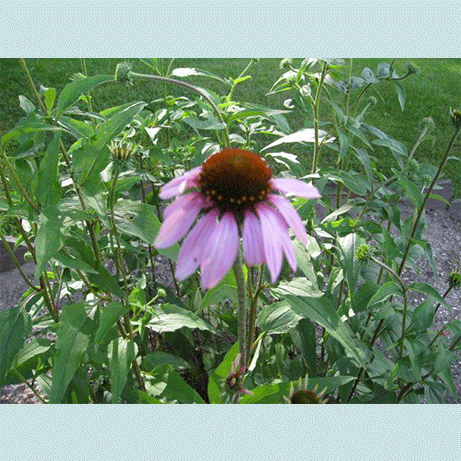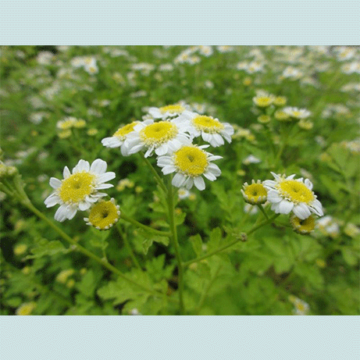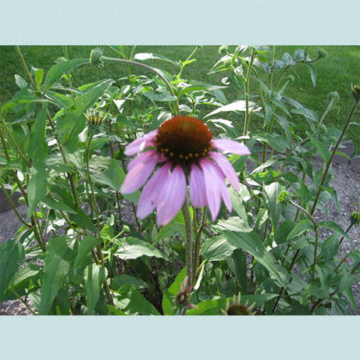Description
Native to the eastern United States, this perennial is well-known as an herb and an ornamental. Many people swear by echinacea and its immune boosting properties, finding it shortens the length of the average common cold and can even prevent its onset. Aside from being an immune booster, medical studies have shown echinacea purpurea to have antidepressant properties. Echinecea is used as an antiseptic and in treating other impurities of the blood including boils, erysipelas, septicemia, cancer, and syphilis. Some have used this flower as an aphrodisiac.
Purple coneflower grows to be about six feet tall with robust purple flowers that make it a great decorative plant. Purple coneflower has a light, pleasant smell and a bittersweet taste. It begins to bloom in late May or early June, losing its flowers by August. Echinacea purpurea is hermaphroditic, having both male and female sex organs. Butterflies are drawn to pollinate these flowers. In nature it is found in dry wooded areas, prairies, and barrens.
Genus: Echinacea
Family: Asteraceae
Subfamily: Asterales
Growing Information: Echinacea purpurea needs to be in full sunlight. It is not as particular when it comes to different soil ph, dryness or wetness. Fluctuation in daily temperatures helps germination. Echinacea purpurea seeds are planted in clumps in either the spring or autumn. Bury the seeds with 1/8″ of loose soil and keep moist. Minimal to no care is required beyond germination. In the fall, remove the dead flowers at the ground. They will return the following year.
In purchasing, international buyers agree to assume the risk of arrival of all items. We cannot replace lost or seized items. You will be required to confirm that you agree to these terms before items can be sent.








